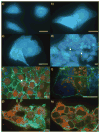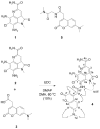Ammosamides A and B target myosin
- PMID: 19097126
- PMCID: PMC2820877
- DOI: 10.1002/anie.200804107
Ammosamides A and B target myosin
Figures






References
Publication types
MeSH terms
Substances
Grants and funding
LinkOut - more resources
Full Text Sources
Other Literature Sources

